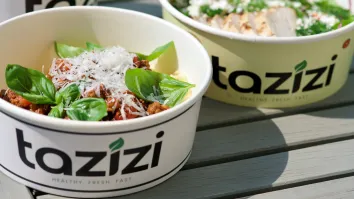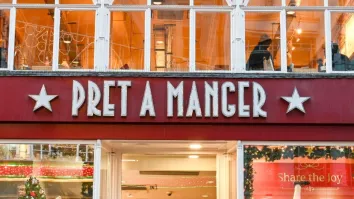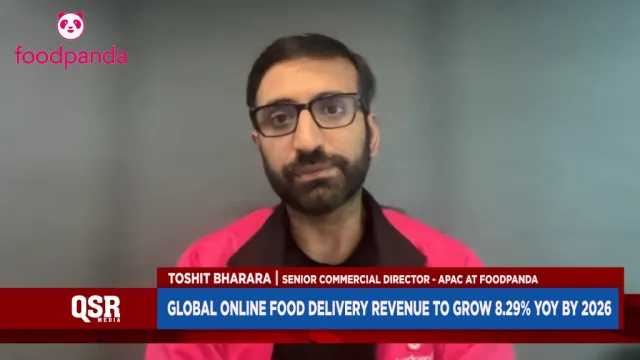
Ireland's fast-food market seizes growth opportunities in 2024
Youthful population, tourism, and Dublin's outlet density fuel Ireland's fast-food growth opportunities.
Boasting one of the highest GDP per capita indicators in Europe according to figures published by the World Bank, Ireland's robust economic growth since the early 2000s has generated a lucrative and thriving fast-food sector. The country offers attractive commercial prospects, particularly in Dublin, which currently hosts two hundred and fifty global financial institutions and nine of the top ten global Information and Communication Technology companies, including giants like Amazon, Google, Microsoft, and Meta.
Several factors determine the potential of the fast-food market in Ireland. Let’s have a close look at some of them.
Youthful demographics drive fast food demand
The share of Ireland’s population in the under-40 age group is a significant one. In 2022, as a measure of its overall population Ireland had the highest share of under-20s in the EU, at 26%.
According to data published by Worldometers.com, the median age in Ireland in 2023 was 38.3 years. This youthful cohort, with busy work, lives in mainly urban environments and a preference for convenience forms an important and substantial market for fast-food businesses.
Tourism boosts foodservice traffic
Ireland has long been a favoured destination for tourists, with the famed hospitality of its people, its unique cultural heritage and its beautiful landscapes attractive to travellers from all over the world.
The Irish Tourism Industry Confederation (ITIC) estimates that €5.3b excluding fares was spent by international visitors to the country in 2023, with North America as the biggest single source market.
Tourists often rely on fast-food establishments for a quick, familiar, and affordable meal, and tourism provides a significant boost in trade volumes, particularly for operators who benefit from outlets in popular locations.
Promising business development
Whilst Ireland reports fewer fast-food chain stores per capita than the UK, it surpasses Northern Ireland. According to recent reporting by Meaningful Vision, as of March 2024, the Republic of Ireland has an average of 25.2 chain fast-food outlets per 100,000 people, compared to 28.8 in the UK, and 20.7 in Northern Ireland.
However, amongst the cities of the UK and Ireland, Dublin heads the table with 58.4 fast-food outlets per 100,000 people, whilst London has 44.3, and Belfast has the least dense coverage with only 36.7 restaurants per 100,000 people.
Although Dublin stands out with its record outlet density per capita, regions such as Kilkenny and Roscommon report fewer than 10 outlets per 100,000. Conversely, Kildare has 44 outlets per 100,000, followed by Westmeath with 35 and Louth with 29, all exceeding the national average.
The distribution of fast-food outlets is revealing, with border areas near Northern Ireland and the Southwest regions having lower densities, whilst the highest concentration is to be found in the capital and its surrounding regions. Distribution closely aligns with urban population density, indicating a strong correlation between the two factors.
Broad selection of products and brands
Ireland offers a diverse range of fast-food formats, catering to a wide variety of consumer preferences, and in response to evolving market trends. From quick-service international chains to independent shops and local fast-food restaurant chains, the market offers a wide array of choices for consumers and plenty of opportunities for entrepreneurs.
The most popular fast-food formats in Ireland are burger and pizza restaurants, with the number of burger stores per 100,000 in Ireland being 66% higher than in the UK. Chicken shop chains are less well represented in Ireland by comparison with the UK, owing to demographic and cultural differences.
Daily visitor flow
Morning traffic in Ireland accounts for approximately 15% of all daily fast-food visits, primarily driven by coffee shops and bakeries. Coffee shops and bakeries enjoy 28% of daily visits in the morning hours from 6 am - 12 am. These shops are generally located along commuting routes, making them more likely to attract visitors on their way to or from work.
In the UK, morning traffic stands at a slightly larger 18%, owing to its bigger urban population and larger number of commuters. With more coffee shops per capita and a higher share in the Quick Service Restaurant (QSR) market, the UK exhibits a greater intensity of morning traffic in coffee outlets when compared to Ireland.
Meanwhile, lunch hours constitute a significant proportion of fast-food visits in Ireland, with a 34% share of daily traffic. Burger outlets have the premium share of this lunchtime traffic, taking precedence over sandwich and coffee shops, with 30% of all traffic between 12 am and 3 pm. In the UK, the lunchtime share is slightly lower at 26% of the total daily footfall, with sandwich shops being the most popular choice - 30%, and burger restaurants taking a 29% share of lunchtime traffic.
Pizza chains in Ireland capture almost half of consumer traffic after 6 pm, likely due to parties and families gathering to share meals. In the UK, favourable periods for fast-food traffic extend into the afternoon and evening, with consistent footfall observed throughout the day. After 6 pm, traffic accounts for 33% in the UK compared to only 25% in Ireland.
Key players: International and Local Brands
Big fast-food operators in Ireland, such as McDonald's, Starbucks, Costa Coffee, Coffee Nero, Subway, and O'Briens, command more than 80% of the morning traffic. Lunchtime pickups are chiefly spread among McDonald's, Costa Coffee, KFC, Supermacs, and Starbucks. Evening traffic after 6pm sees McDonald's, Supermacs, Apache Pizza, KFC, and Domino's as front runners.
Fast-Food Trends: A Diverse Mix
Maria Vanifatova, CEO of Meaningful Vision, comments on the insights on insights derived from fast-food marketing data reports in the UK and Ireland: “Whilst there are similarities in fast-food industry trends between the UK and Ireland, there are also notable differences, reflecting the factors unique to each region, from population size, distribution and demographic makeup to restaurant density, transportation, incomes and jobs. The UK, particularly England, has a greater number of urban areas, and longer commuting times resulting in higher foodservice traffic during the morning and evening hours.
"In contrast, Ireland has a lower population density and is known for its large rural areas and a gentler pace of life. However, restaurant density in Dublin is higher than London's, making the Irish capital one of Europe's top destinations for fast food.”
Ireland's Fast-Food Promise
In recent years Dublin has emerged as one of Europe’s top destinations for fast - food, and with many opportunities also to be found elsewhere in the country, Ireland holds great promise for operators looking to grow an existing business, and for entrepreneurs seeking new ventures. As with any such project, minimising risk is an important factor in decision-making, and a thorough knowledge of the market is crucial.
Meaningful Vision’s data analysis and reporting identifies the ideal locations, products, and promotions for your business, imparting profound insights into consumer behaviour patterns, both in Ireland, and the UK. Understanding customers' behaviour is essential for enhancing operational efficiency, whether looking to optimise staffing, revenue menu offerings, or tailor marketing strategies, to leverage peak hours.



























